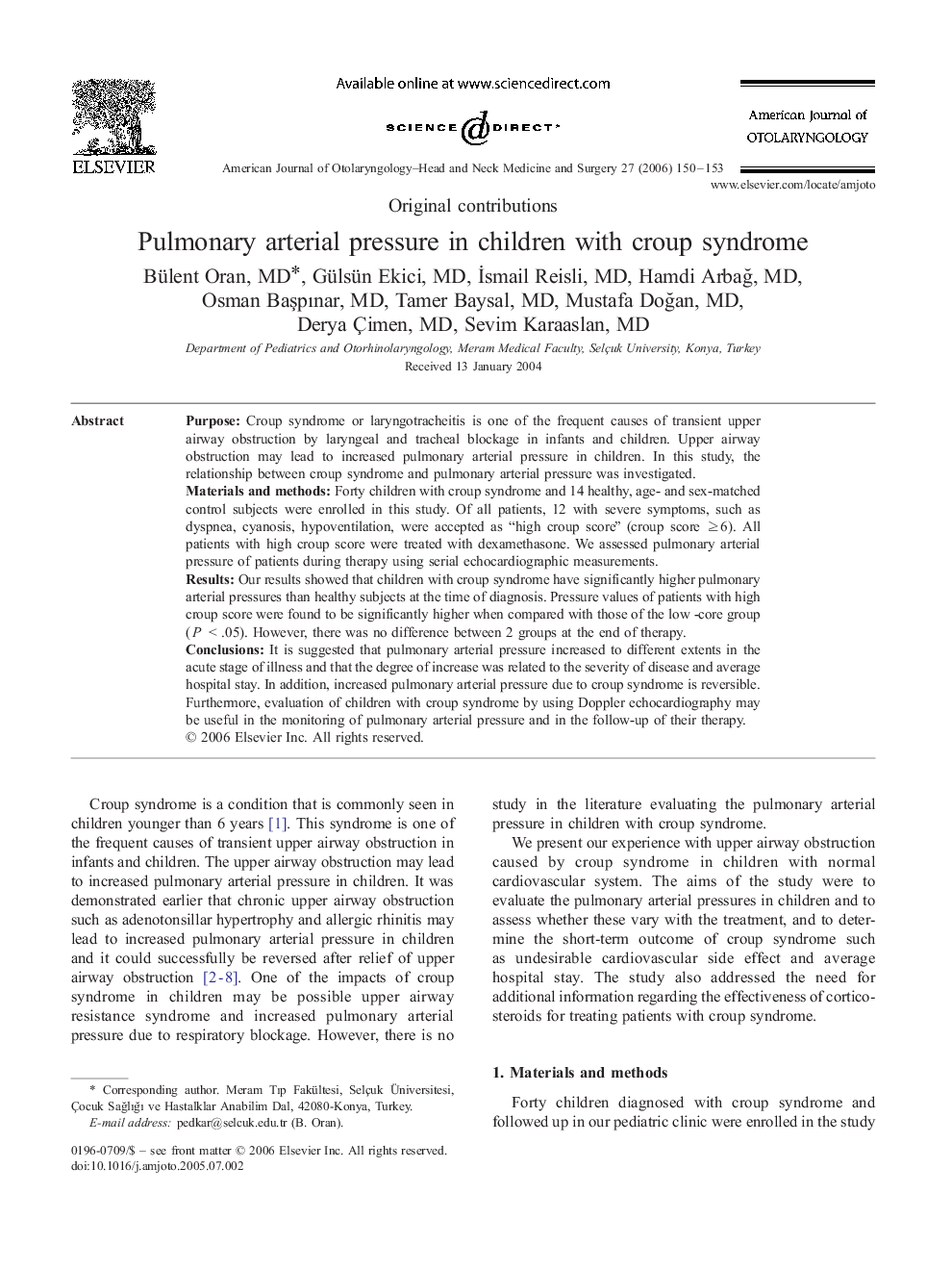| Article ID | Journal | Published Year | Pages | File Type |
|---|---|---|---|---|
| 4104607 | American Journal of Otolaryngology | 2006 | 4 Pages |
PurposeCroup syndrome or laryngotracheitis is one of the frequent causes of transient upper airway obstruction by laryngeal and tracheal blockage in infants and children. Upper airway obstruction may lead to increased pulmonary arterial pressure in children. In this study, the relationship between croup syndrome and pulmonary arterial pressure was investigated.Materials and methodsForty children with croup syndrome and 14 healthy, age- and sex-matched control subjects were enrolled in this study. Of all patients, 12 with severe symptoms, such as dyspnea, cyanosis, hypoventilation, were accepted as “high croup score” (croup score ≥6). All patients with high croup score were treated with dexamethasone. We assessed pulmonary arterial pressure of patients during therapy using serial echocardiographic measurements.ResultsOur results showed that children with croup syndrome have significantly higher pulmonary arterial pressures than healthy subjects at the time of diagnosis. Pressure values of patients with high croup score were found to be significantly higher when compared with those of the low -core group (P < .05). However, there was no difference between 2 groups at the end of therapy.ConclusionsIt is suggested that pulmonary arterial pressure increased to different extents in the acute stage of illness and that the degree of increase was related to the severity of disease and average hospital stay. In addition, increased pulmonary arterial pressure due to croup syndrome is reversible. Furthermore, evaluation of children with croup syndrome by using Doppler echocardiography may be useful in the monitoring of pulmonary arterial pressure and in the follow-up of their therapy.
